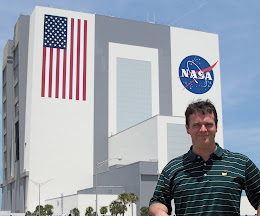 |
| NASA's experimental aircraft will use electricity and zero gas to fly. (NASA) |
NASA’s first piloted X-plane in two decades, the X-57 Maxwell will push the boundaries of aeronautics by creating a clean-air, low noise aircraft. Using a modified Italian Tecnam P2006T high-winged aircraft, NASA has removed its propellers and will install an experimental wing with a reduced surface area.
When testing is completed in 2020, the nearly 3,000-pound X-57 may be able to fly at a maximum altitude of 14,000-feet. Its fastest air speed is expected at about 172 m.p.h. during a cruising altitude of 8,000-feet.
Test pilots and engineers are now preparing for those first flights this autumn by working with an X-57 simulator. Pilots are learning how the unflown aircraft may react in flight and understanding possible failure modes.






